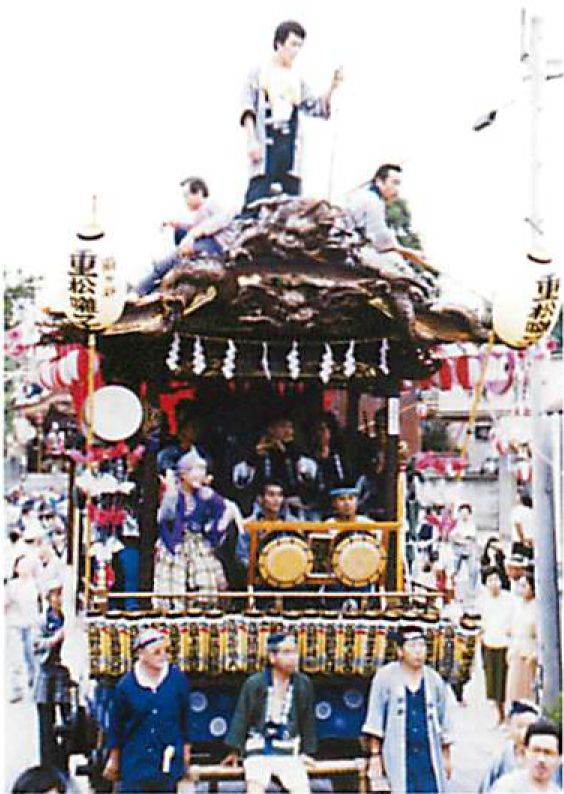| <所在地 瑞穂町殿ケ谷1304番地2> | <Location: 1304-2 Tonogaya, Mizuho-machi> |
| 殿ヶ谷の山車は、その経緯として、明治15年(1882年)頃に砂川村の九番組から購入した説、安政年間(1854~1859)に地元で建造後、間もなく砂川九番組に売却し、また明治15年頃に買い戻したという二つの説がある。 | There are two theories about the history of the Tonogaya float. One is that it was purchased from the Kyubangumi of Sunagawa village in 1882. The other is that it was built on site between 1854 and 1859, immediately sold to Kyubangumi in Sunagawa, and then bought back around 1882. |
| 山車の様式は、一本柱単層唐破風屋根人形山車(たんそうからはふやねにんぎょうだし)で、梁間(はりま)一間、桁行(けたゆき)二間造りの構造となっている。一本柱を後方から建てるために、棟は中央より後方にかけて分かれている。このように一本柱を建てる方式を「後建て方式」と呼び、多摩地方に最も多く見られる。 | The float has a single-layer gabled roof with a single interjoist (harima) and two purlins (ketayuki).Since there is a single pillar standing from the back, the building is also constructed toward the back of the float.This style of construction with a single pillar toward the back is called "ushirodate style" (meaning "built toward the back") and can be seen frequently in the Tama region. |
| 建造した大工は残念ながらわかっていないが、彫刻は右脇障子鏡板に「入間川村 甲田近江 源髙壽彫刻」とある。 | Unfortunately, it is not known what carpenter built it, but there is an inscription on the right sliding panel indicating that the carvers of the sculpture were "Kawamura Iruma, Omi Koda, and Takahisa Minamoto." |
| 山車の様相を詳細に見ると、まず鬼板(おにいた)・懸魚(げぎょ)に施された「三匹竜」が目を引く。破風板(はふいた)の両端まで尾がからみついており、迫力に満ちた構図と彫法である。また、囃子舞台(はやしぶたい)の天井には、部分彩色による墨絵の「雲竜図」が描かれている。 | If you look closely at the float, your eye will be drawn to the three dragons on the roof plates and tiles.Their tails extend the full length of both gables, creating an impressive composition.The ceiling above the music performance stage has a partially colored India ink depiction of a flying dragon. |


